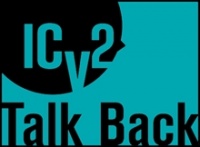 Charles Brownstein, executive director of the Comic Book Legal Defense Fund, gave ICv2 permission to publish his comments on the release of Saga #12, which is not being offered in some channels due to content (see “Apple Bans Saga #12 from iOS Apps”). He argues that each retailer’s decision is their own, but the material is protected by the First Amendment.
Charles Brownstein, executive director of the Comic Book Legal Defense Fund, gave ICv2 permission to publish his comments on the release of Saga #12, which is not being offered in some channels due to content (see “Apple Bans Saga #12 from iOS Apps”). He argues that each retailer’s decision is their own, but the material is protected by the First Amendment.Yesterday, word quickly spread about Apple banning the sale of Saga #12 on iOS apps such as comiXology because of two small depictions of gay sexual content within the context of a larger sequence of images. The images in question appear on the faceplate of the character Prince Robot IV, who possesses a television monitor for a head, while he lies wounded on a battleground. The two images both feature NSFW content.
As I wrote yesterday in our story covering Apple’s ban, it is within Apple’s rights as a private company to refuse to carry the comic. The same is true of any brick and mortar retailer who refuses to carry the book--it’s their business prerogative to determine what they choose to offer.
That said, it’s important to note that while the images are sexually explicit, they and the issue that contains them are protected by the First Amendment. Retailers have a right to sell Saga #12, readers have a right to possess it, and the creators and publisher had the right to create it.
For Saga #12 to be unprotected by the First Amendment, it would need to be found legally obscene--an outcome that is highly unlikely.
In Miller v. California, the Supreme Court created a three-prong test to determine what is obscene. In what is commonly referred to as the "Miller test," the court mandated that states can regulate material as obscene if it meets all three of the following prongs:
- whether the average person, applying contemporary community standards, would find that the work, taken as a whole, appeals to the prurient interest;
- whether the work depicts or describes, in a patently offensive way, sexual conduct or excretory functions specifically defined by applicable state law; and
- whether the work, taken as a whole, lacks serious literary, artistic, political, or scientific value.
Obscenity is always determined by applying local community standards, so each community will have different metrics in determining a whether a piece of work is obscene or not. However, each community must take the work as a whole. This means that all of the contents of Saga #12 must be considered, not just the offending images. Therefore, the entire issue considered as a whole must appeal to the prurient interest, it must depict or describe sexual conduct or excretory functions in a patently offensive way, and it must lack serious literary, artistic, political, or scientific value.
Opinions will vary about the merit of the content in Saga #12, as they will with any comic book. However, the likelihood of the material being found to violate all prongs of the Miller Test is extremely slim.
Each retailer must independently determine what they will carry because they are the best expert with regard to knowing what material their community will accept. However, that business decision should be informed by the knowledge that the contents of Saga #12 are protected by the First Amendment.
Please help support CBLDF’s important First Amendment work and reporting on issues such as this by making a donation or becoming a member of the CBLDF!
The opinions expressed in this Talk Back are solely those of the writer, and do not necessarily reflect the views of the editorial staff of ICv2.com.


